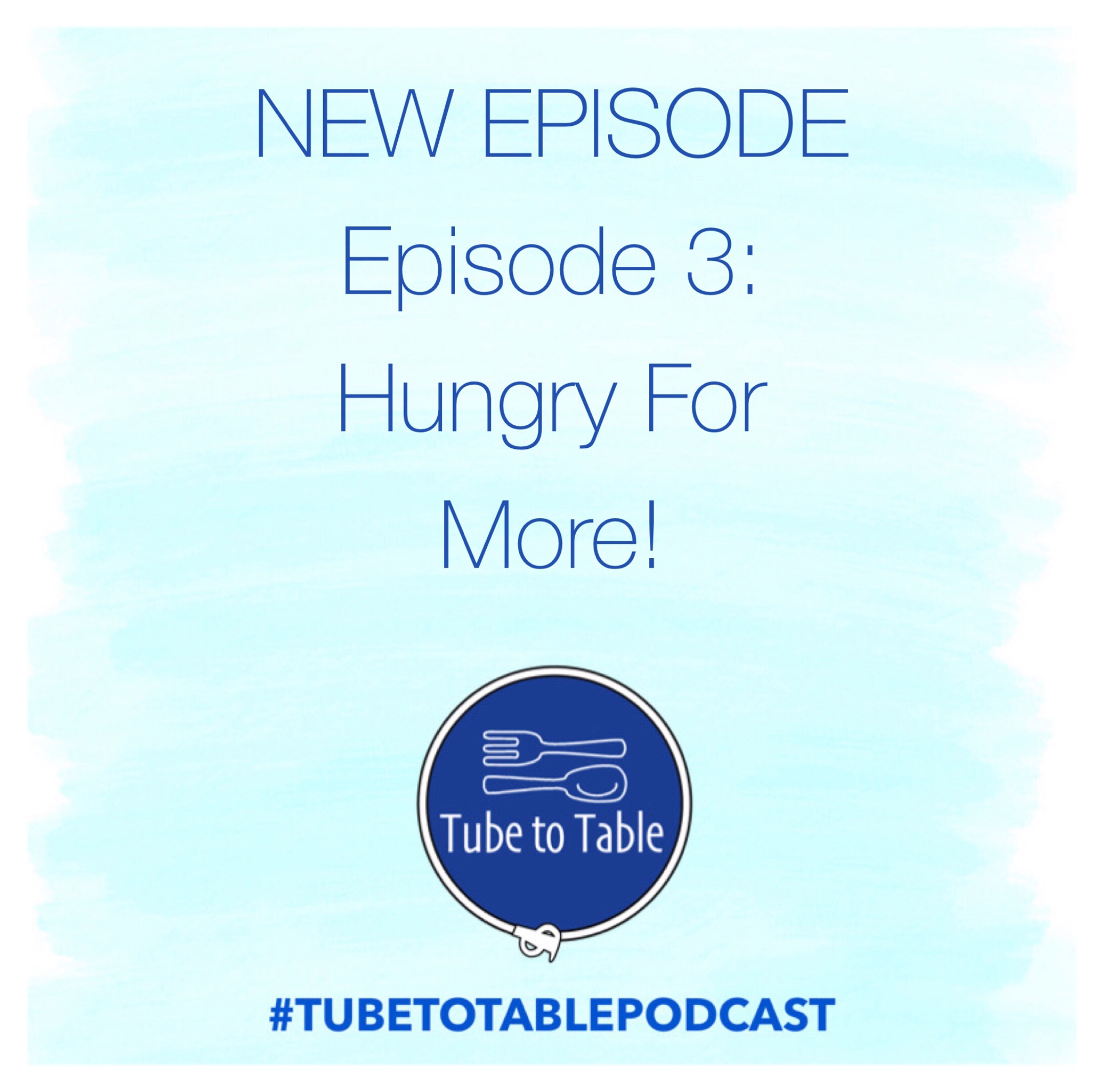Tube To Table Podcast: Episode 3: Hungry For More!
April 22, 2019
Posted in: Feeding, Feeding Tube Weaning, Tube To Table Podcast
In this week’s episode of Tube To Table, Jennifer and Heidi are giving our listeners a brief history of how the Thrive by Spectrum Pediatrics Tube Weaning Program started. They will discuss what brought them together as therapists and how their interest in feeding therapy and tube weaning first started.
You can download this episode from Itunes, Stitcher, Spotify, Google Play, or listen to it below:
Where did it all start?
After working as an occupational therapist for a few years and providing feeding therapy to children in a variety of settings, Jennifer started to notice that something was missing. She started to realize that the techniques that she had learned in school were helping, but were not making a huge difference in the child’s quality of life and relationship with food. Jennifer founded Spectrum Pediatrics as well as the feeding division, Thrive by Spectrum Pediatrics. Feeding therapy generally focuses on all of the “essential skills” required for eating including behavior, sensory, and oral motor. Jennifer started to observe that the kids were making small gains in those areas, but still fully tube-fed and unable to understand how food makes them feel.
Heidi started working with Thrive by Spectrum Pediatrics a few years later after working as a speech-language pathologist at a children’s hospital for many years. Heidi also found herself working on skills during therapy, specifically swallowing. She worked with children who had the ability to swallow, but since their eating journey began with a rocky start, they did not have trust or interest in eating and did not understand the relationship between eating and how it made them feel.
What was missing?
As Jennifer and Heidi started working together, they started to find research on what motivates children to eat. This research emphasized the importance of eating for internal reasons such as hunger, as well as the importance behind building a positive relationship with food. Therapy at Thrive by Spectrum Pediatrics started to work on trust and focusing on decreasing the aversion and fear of food before working on any “skills” required for eating. The European models of tube weaning emphasized that hunger was a very important element that was missing from therapy in the United States.
As the Thrive by Spectrum Pediatrics Tube Weaning Program was built in the first few years, it was important to include hunger as the CONTEXT of our program. If you are working on treatment-based therapy meaninglessly then those skills have no meaning behind them.
“Learning to eat without hunger is like learning to swim while standing on the dock. You are flapping your hands, but you’re not swimming.” – Heidi Moreland
Hunger is NOT the magic bullet!
Hunger is not magic. When you are learning to swim, just because there is water, does not mean you will know how to swim. You still have to learn how to swim. Just because a child is hungry, does not mean they are magically going to start eating. As the European models came over to the U.S, it became clear that were a few missing elements. There are natural drives for learning to eat that include hunger, taste or sensory experience, curiosity or novelty, and togetherness and connection with family. Family mealtimes are a universal time for people to come together, and it is important within tube weaning and feeding therapy that we include all of the natural drives for learning to eat. It is crucial to have hunger as the context within therapy, but to also consider the importance of a child’s relationship with food.
When our program focused on the Division of Responsibility and the responsive feeding approach, within the context of hunger, we started to see more progress. We discussed the Division of Responsibility and why it is important on last week’s episode which you can find here.
What do we focus on at Thrive?
After working with many families, we have observed the benefit of bring your medical team along on the tube weaning journey to understand the importance of introducing hunger. We work with physicians to educate them on what the natural drives for eating are and how children learn to eat in a positive way. Many doctors were not given this information during their training and therefore we will work together with your team to educate on the risks of bad eating habits and how we can work as a team. STAY TUNED: There will be an upcoming Tube to Table episode about how to start the conversation with your medical team when you feel ready for weaning.
We help children learn to trust and understand food, within the context of hunger, while learning to have happy and healthy mealtimes. Our program focuses on building trust, interaction, learning your child’s cues, and working on oral motor skills or behaviors if it is clinically necessary. The majority of feeding therapies in the United States are focused on the external drive for eating rather than the fundamental drives that we discuss in this week’s episode.
Keep an eye out for next week’s episode where we are speaking with a mom who has been through the tube weaning journey with her child. She will share her experience first-hand and talk about what was hard, what was helpful, and where her child is now! See you next week!

Be the first to comment